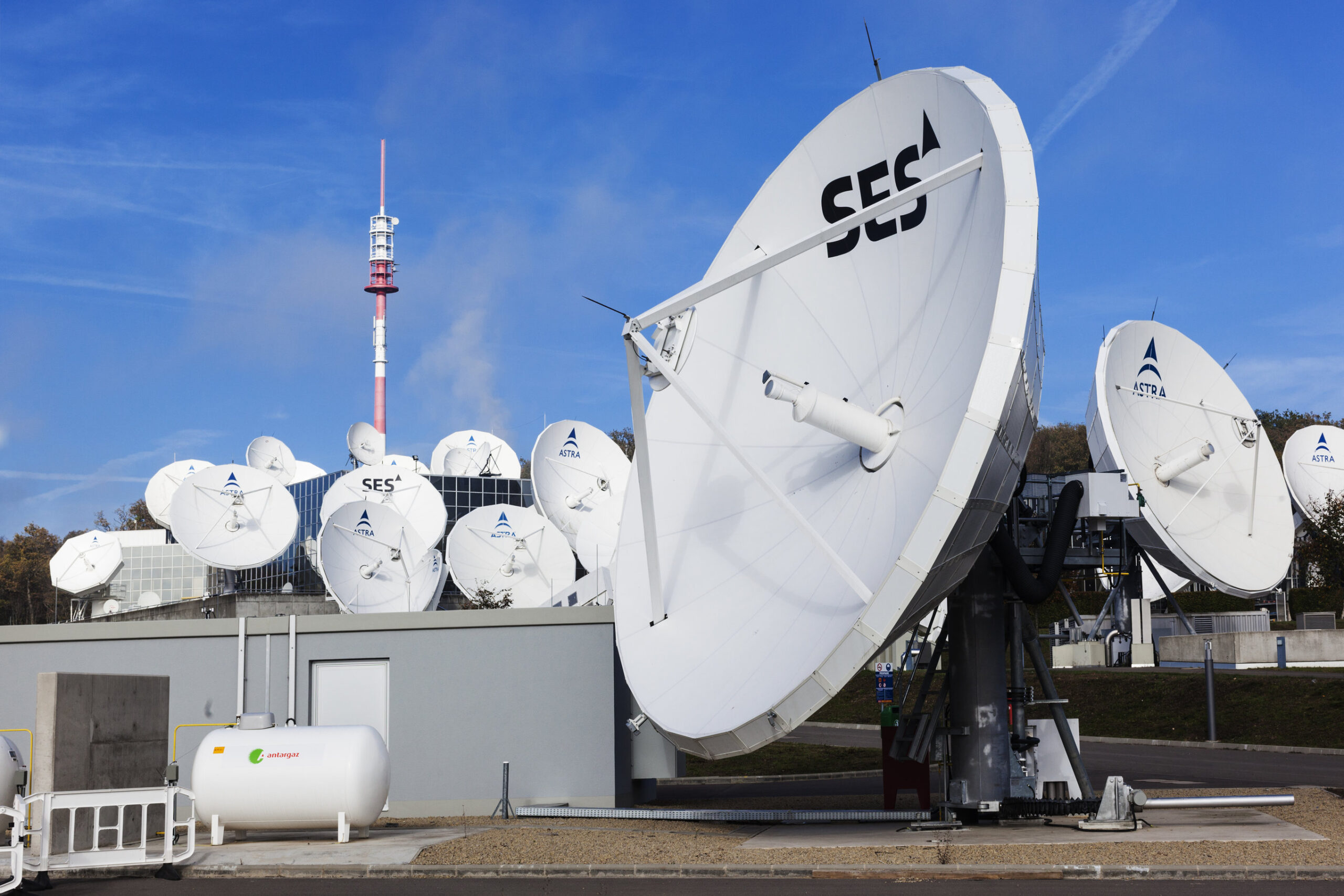
WASHINGTON — Commercial satellite operator SES has selected SpaceX and United Launch Alliance to each launch two geostationary satellites designed to replace C-band capacity in the United States that the Federal Communications Commission is repurposing for 5G cellular networks.
SpaceX’s agreement includes room to launch one additional “contingency satellite” that has not yet been ordered.
SES said Aug. 5 that ULA will launch two satellites built by Boeing on a single Atlas 5 in 2022. SpaceX will launch two satellites built by Northrop Grumman on a Falcon 9 rocket that same year.
SES emphasized its decision to procure exclusively U.S.-built satellites and rockets, as the cost for both will be covered by winning bidders of the FCC’s December C-band spectrum auction. In both launch announcements, SES said it is “investing in America” as it works to repack customers using 500 megahertz of C-band spectrum today into 200 megahertz by early December 2023.
SES, along with Intelsat and Eutelsat, are under pressure — but not required — to rely on U.S. companies for replacement C-band satellites and associated infrastructure and services.
The companies told the FCC two years ago that they would exclusively order U.S.-built satellites if the FCC allowed them (with Telesat) to privately auction C-band spectrum, a move expected to generate upwards of $60 billion in proceeds.
The FCC, facing congressional opposition to a private auction, ultimately chose a public auction where proceeds will be directed to the U.S. treasury. But the FCC adopted auction rules requiring winning bidders to pay for moving costs so satellite operators can continue to serve their C-band customers, mainly television broadcasters, with less spectrum.
Sen. John Kennedy (R-La.), who chairs a Senate appropriations subcommittee that oversees the FCC, wrote FCC Chairman Ajit Pai in May urging the commission to require satellite operators buy their reimbursable replacement C-band infrastructure from U.S. companies.
“If the American taxpayer is ultimately going to foot the bill of foreign satellite companies, then we need to ensure as much of that money stays here at home as possible,” Kennedy wrote.
Pai, during a June 16 Senate hearing, told Kennedy that the FCC had no authority to mandate U.S. purchases absent a national security justification.
SES has nonetheless sought to steer clear of additional congressional heat by sourcing auction-related satellites and launch services solely from U.S. companies.
SES described ULA’s Atlas 5 rocket as “an American launch vehicle launched from the American soil,” language similar to the way NASA Administrator Jim Bridenstine describes the agency’s commercial crew program.
SES said its “long-standing relationship with SpaceX signifies its latest commitment to the U.S.”
The Luxembourg-based operator plans to order two more C-band satellites, according to the company’s spectrum transition plan filed to the FCC in June. The company estimates spending $1.67 billion on C-band infrastructure — $1.25 billion on replacement satellites and launches, and $420 million on ground infrastructure and other costs.
SES is striving to meet a December 2023 target to vacate the spectrum in order to receive $3.97 billion in incentive payments for clearing C-band on an accelerated timeline. The FCC is mandating satellite operators exit the lower 300 megahertz of C-band by December 2025, but has set up a program to incentivize exits two years sooner. Those incentive payments, like the reimbursements for replacement satellites, would come from the auction’s winners.
SpaceX and ULA released statements on the SES launch awards.
“SES is one of SpaceX‘s most-valued partners, and we are proud of their continued trust in our capabilities to reliably deliver their satellites to orbit,” SpaceX president and chief operating officer Gwynne Shotwell said in a news release. “We are excited to once again play a role in executing SES’s solutions to meet their customers’ needs.”
ULA president and chief executive Tory Bruno said the company will “deliver a tailored launch service that minimizes orbit raising time and perfectly meet our customer’s requirements.”
“We are thrilled to provide this optimized launch solution to SES for this crucial launch,” he said.